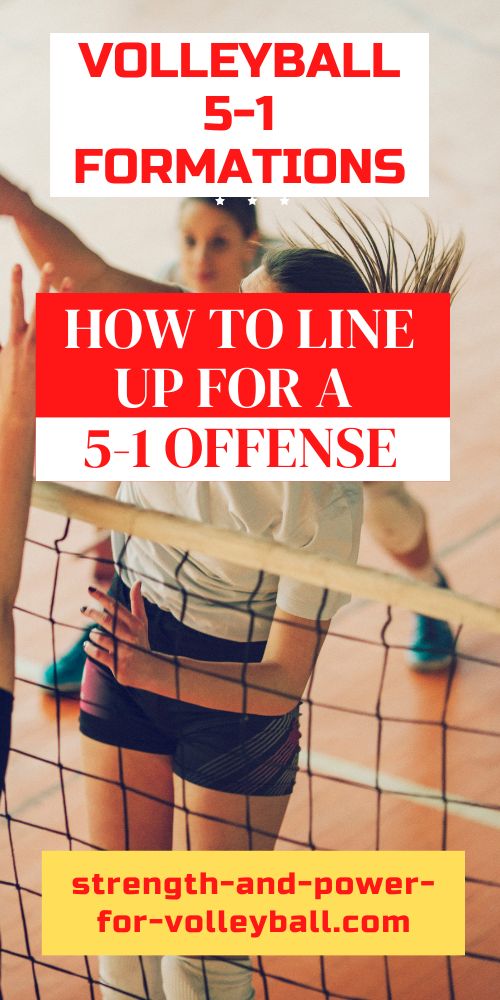Volleyball Formations 5-1
Alignments and Rotations
Volleyball formations 5-1 for running an offensive system for a team that has just one setter. On this page you'll learn how to line up on the court when running a 5-1 offense. Also, you'll learn the advantages and disadvantages of running the 5-1 volleyball system.
What is a 5-1 Offense?
A 5-1 offense is when a team has 1 setter that sets in every rotation. So, there is 1 setter and 5 attackers. A 6-2 offense has 2 setters and 6 attackers.
When the setter rotates to the front row, the setter is still setting, but now the setter has just two attackers on the front row.
The advantage here is that now the setter has the option to attack at the net.
The disadvantage is the setter has only two attackers at the net to set.
Advantages of the 5-1 Offense
When to run a 5-1
- When you have one really good setter you want setting in all rotations
- If you have a middle attacker that is a good slide attacker
- If you have a strong middle slide attacker. Have your strongest middle slide attacker next to the setter in rotation. So, when the setter follows the middle, the setter can set the slide for two rotations.
- If you have opposites that are good back row attackers
Front Row Players Switch Positions After the Serve
The outside hitter primary attacks from the left side of the court. This left side is called "strong side" because this where the outside hitter primary attacks from.
After the serve players switch positions. The outside hitter switches to the left side. The right side hitter switches to the right side of the court and the middle switches to the middle to hit and block in the middle.
Volleyball Terminology for Positions
Stacking
Stacking is when players are grouped together to one side of the court in order to get an advantage. For example, you may decide to stack players to the left side of the court so the outside hitter is in better position to approach to hit.
S is the setter.
L is the libero.
R is the player opposite the setter. This is also referred to as the Opposite or the Right Side Hitter.
H1 is the outside hitter closest to the setter.
H2 is the second outside hitter.
The libero is the player that comes in the match to replace a back row player. The libero usually replaces the Middle Blocker in the back row.
Rotation 1
In rotation 1, the setter is RB. The libero is MB. The H2 (second outside attacker) is LB.
In this rotation, the team has 3 primary passers. The H2, the Libero, and H1.
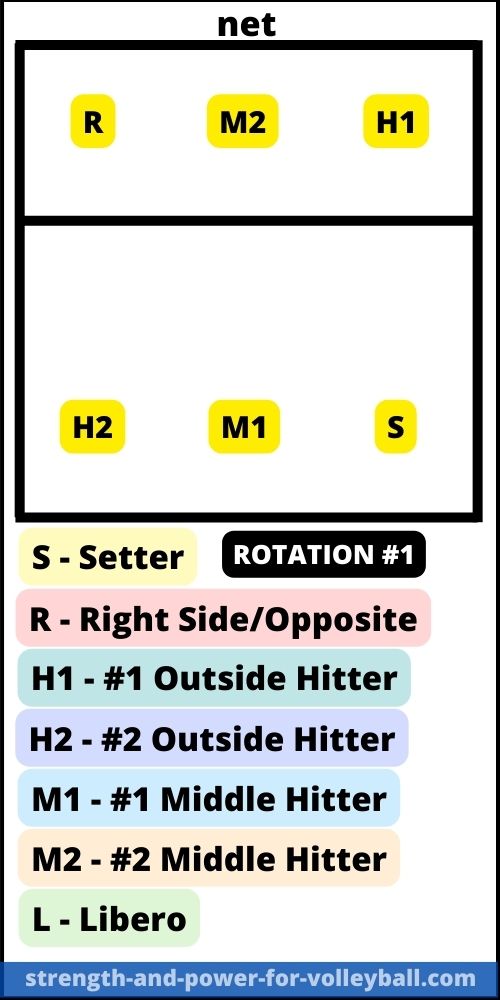
The H2 needs to be careful not to overlap the player in LF (R).
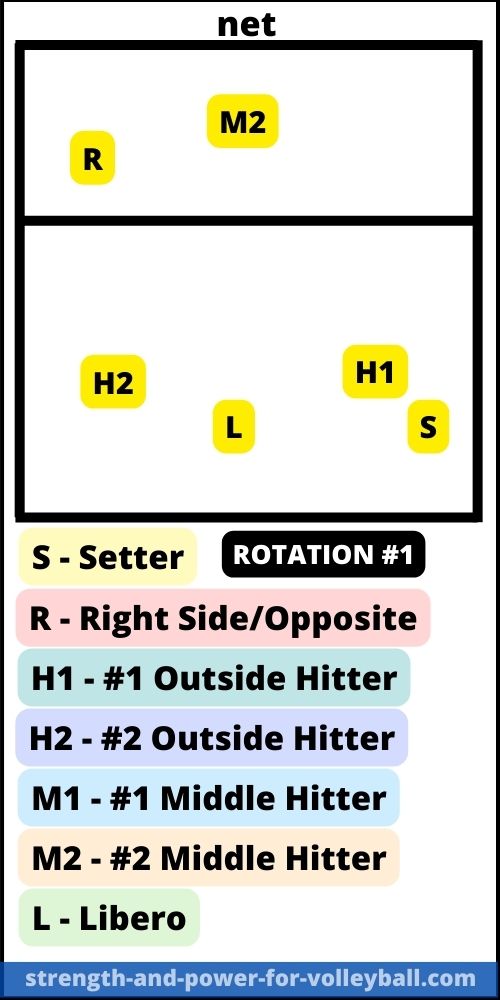
Rotation 2
In rotation 2, the setter is MB. The libero is LB. The H1 is RB. You can see the players have shifted positions, but are still in legal rotation.
The setter is pushing the Opposite to the net. The setter and opposite are lined up this way because for the rotation to be legal, the opposite must be closer to the centerline than the setter.
The H1, Libero, and H2 are lined up ready to pass.
This rotation has one of the most common overlaps that gets called. The setter and libero (LB).
The libero will move over and try to cover more court to receive the serve. In this situation, the setter should watch the libero and make sure there isn’t an illegal overlap.
Ideally, you want the libero to get in the best position they can to receive the serve. So, it’s usually best for the setter to get in position to make it easier for the libero.
Also, the H2 is LF and needs to be closer to the net than the libero. So, when the H2 backs up to pass, there is potential here for an overlap.
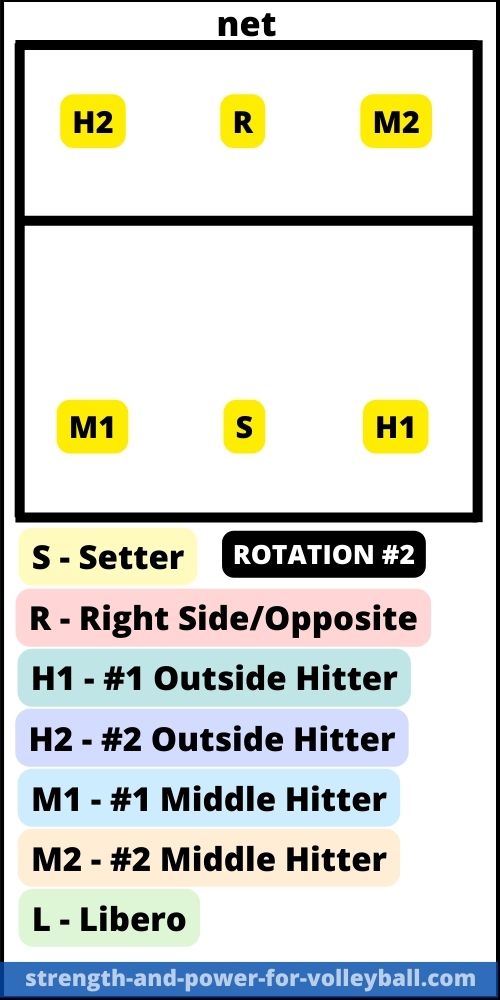
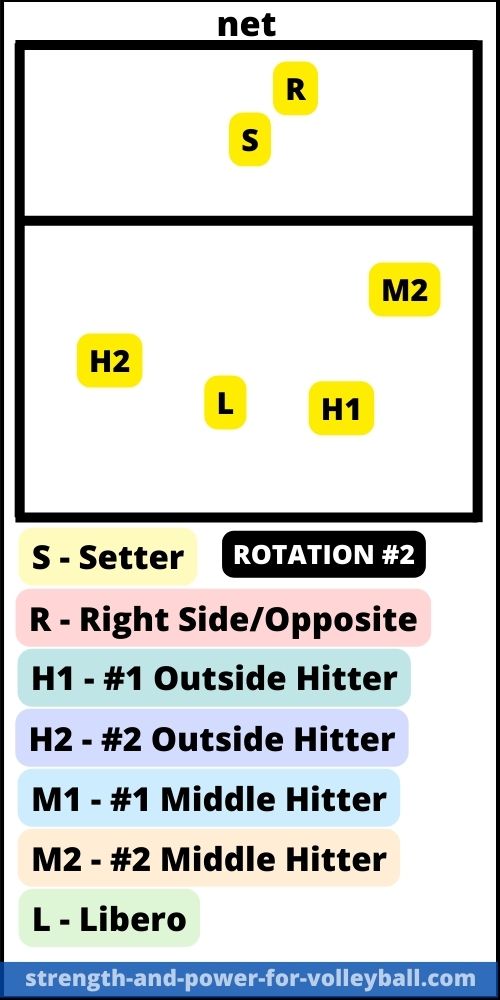
Rotation 3
One of the best strategies is to always have the Outside Hitters and Libero passing in serve receive.
Here, the libero has replaced M2 in the back row. The setter is LB. The two outside hitters are lined up to pass in serve receive.
With the H2 at MF and H1 at MB, there is potential for overlap. Also, the H2 needs to be careful not to overlap the M1.
Remember, one of the main goals of serve receive is to get the setter near the target area as quickly as possible. You want the setter near the net to receive the pass. You want the setter near the net to deliver the ball to the attackers. If the setter doesn't get to the net, it’s going to be much more difficult to get a successful attack.
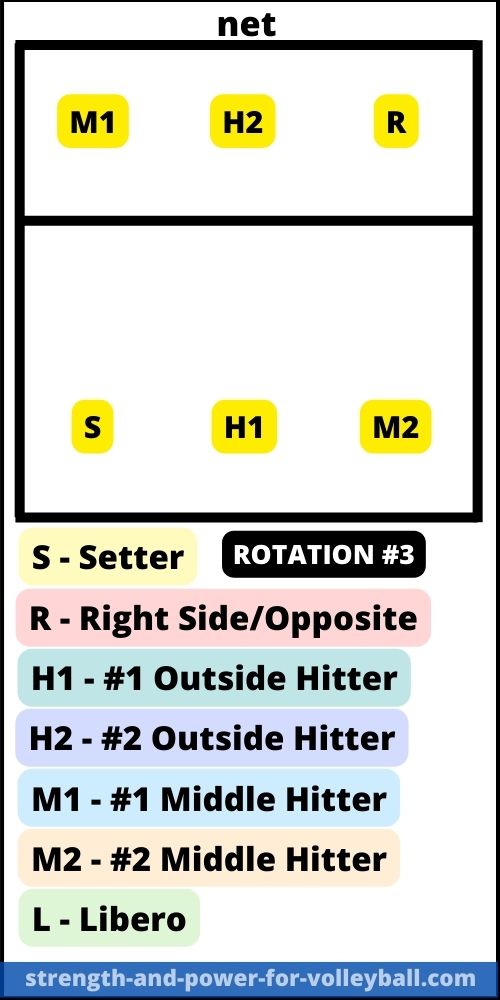
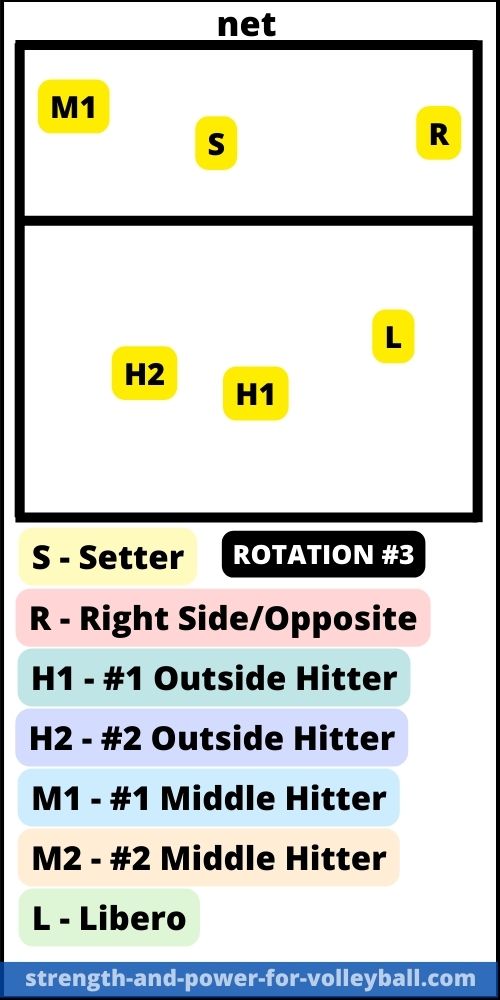
Rotation 4
Setter is now LF. H2 is coming over the left side of the court to pass and attack at the outside. The H2 needs to be careful not to overlap M1.
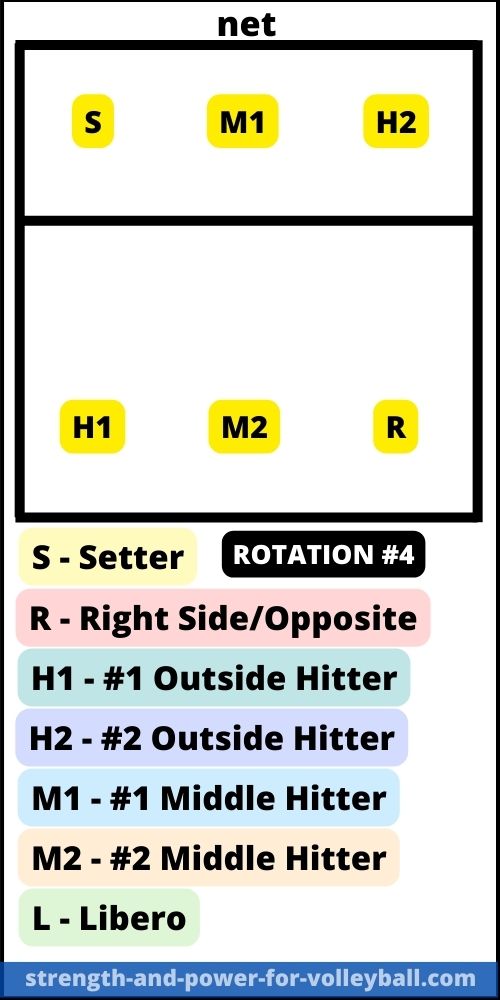
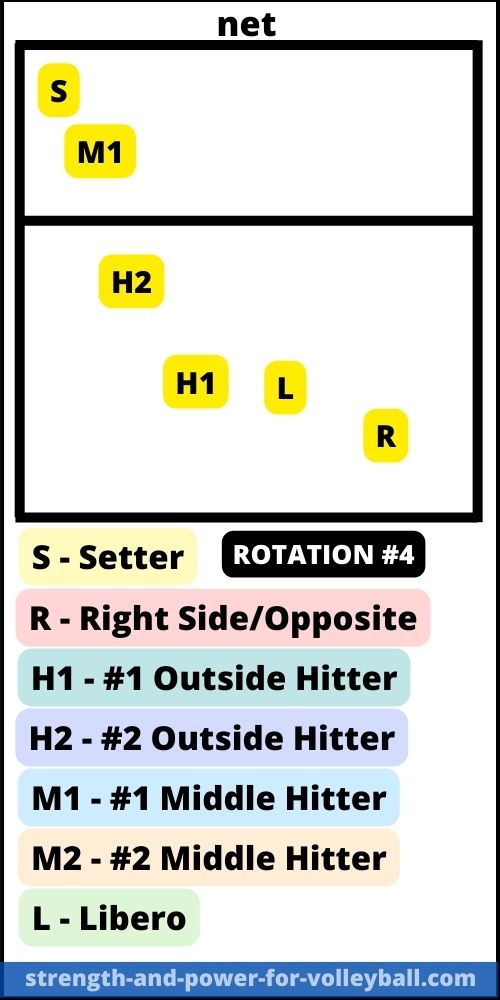
Rotation 5
Setter is now MF.
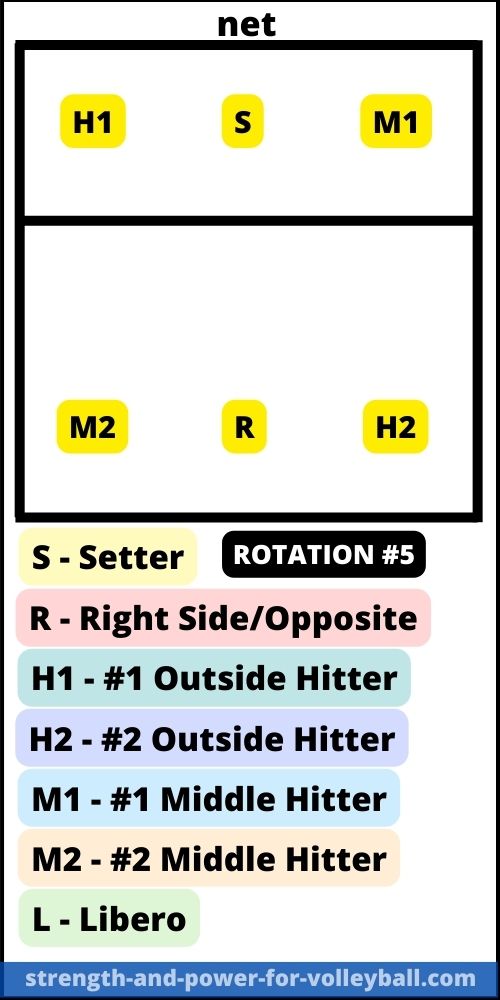
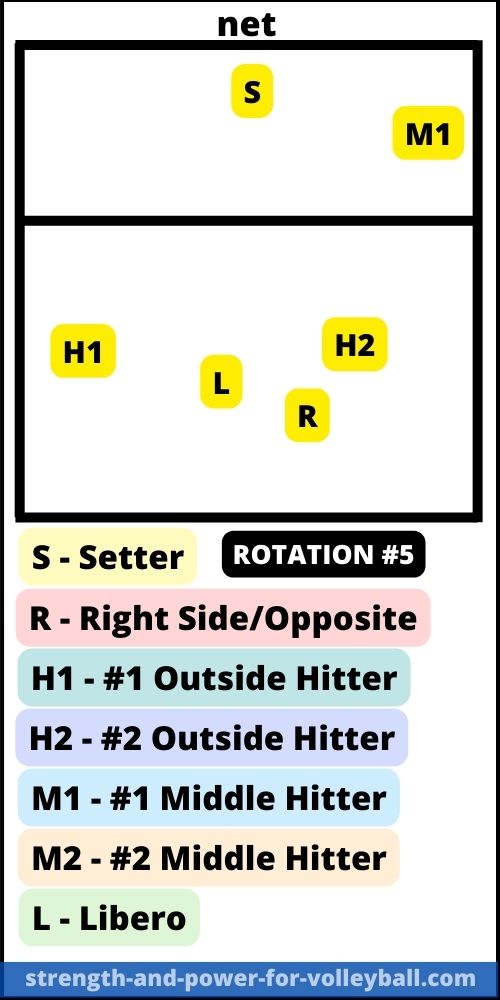
Rotation 6
Setter is now RF.
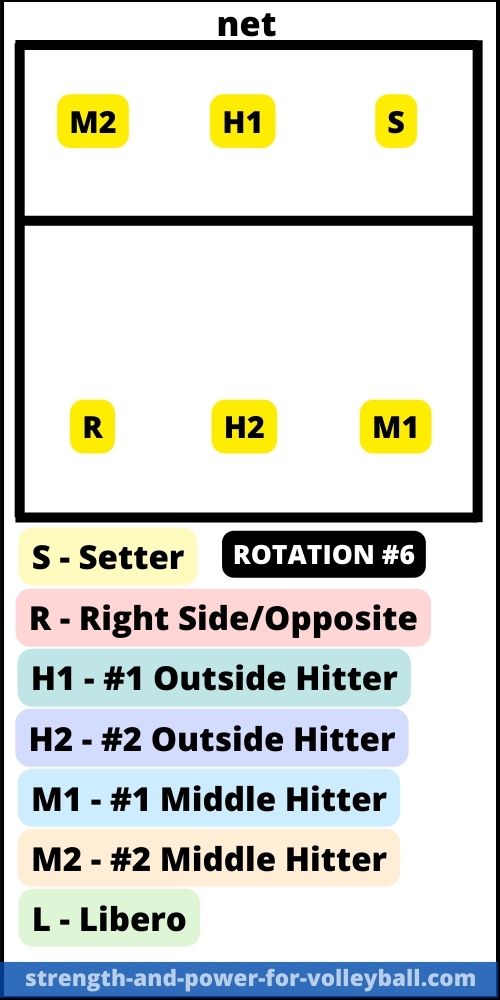
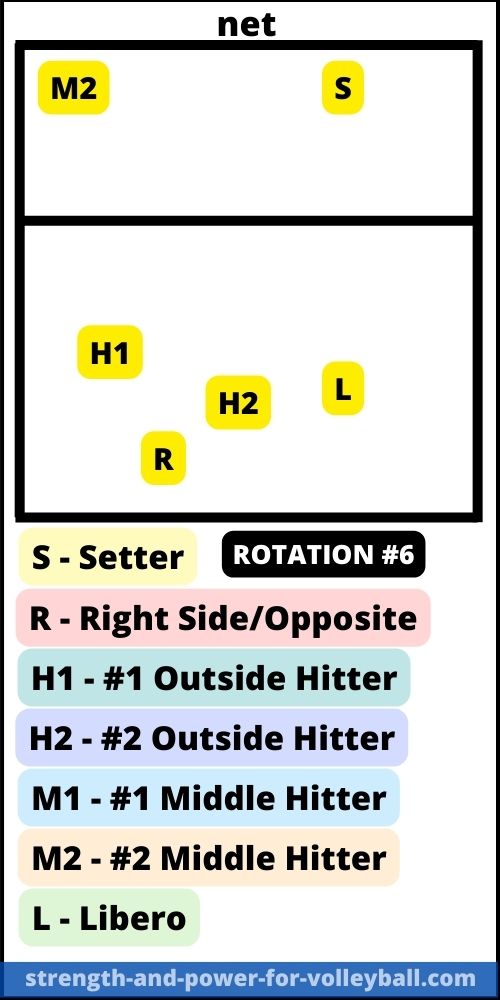
Volleyball Formations 5-1
If you enjoyed these tips and would like to keep it close to you at any time, just save this pin to your Pinterest Volleyball Training Board.
- Home
- How to Play
- Volleyball Formations 5-1
